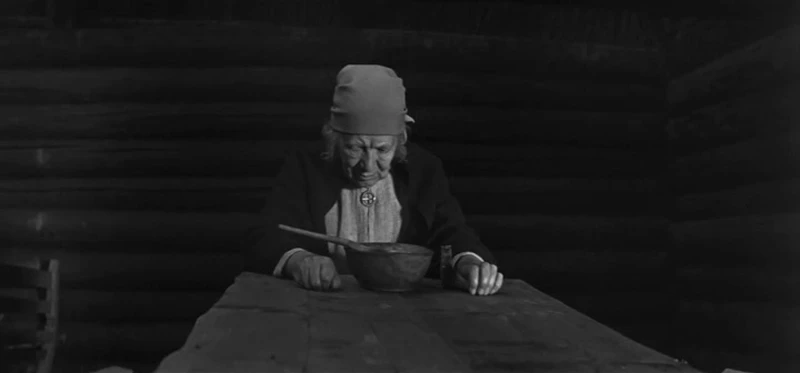Libahunt AKA Werewolf (1969)
| director: | Leida Laius |
| release-year: | 1969 |
| genres: | drama, philosophical, werewolf, shocktober |
| countries: | Estonia |
| languages: | Estonian |
| fests: | SHOCKtober 2024: WOLFtober |
There's almost zero English-language information about this old Soviet-era Estonian film. It's based on a 1911 screenplay of the same name by August Kitzberg, also Estonian. From the stark, contrasty black-and-white film with extremely high-key, soft faces, I would have guessed this was from the 40s rather than 1969. But that's not judgment, it generally looks really nice. The music over the opening credits sounds like a simple one-string folk instrument being plucked regularly with something that sounds like a kazoo occasionally belting out over it. Villagers with torches run in, warbling something that sounds like a joik, and start a big bonfire. It seems like a joyous celebration. They have a second bonfire in the sea and ride horses around it, which is neat. All of the girls were flower crowns and dance in a big ring.
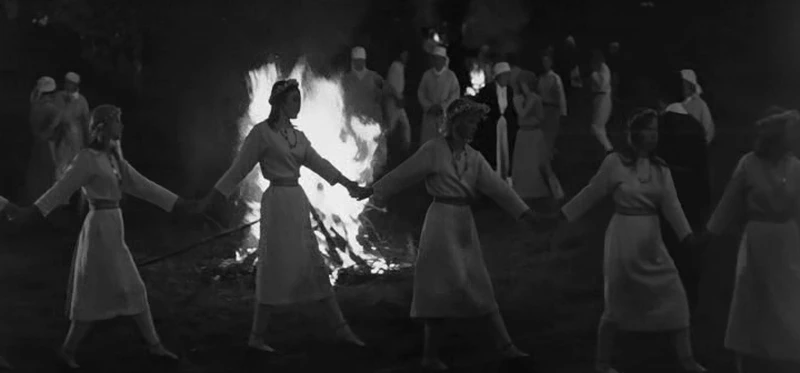
Two youths run off into the baltic forest, laughing and giggling and flirting. They interact for a long time using only facial expressions and hand gestures, even though this is not a silent film and they are capable of speaking. When they return to the group, one of the girls angrily shouts "libahunt!" At them. "Werewolf, werewolf!" the villagers join her. We don't yet know why they think this. They surround and capture the girl, interspersed with shots of a carriage that don't fit in but look really cool. They shout, "Wolf! Witch! Wild dog!" at her. She looks quite a bit like Summer Glau.
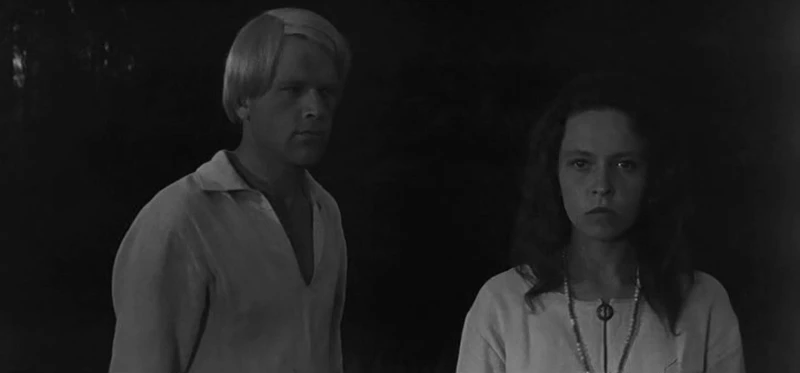
"Werewolf you say! Yes, I am!" she says defiantly. "Wolf doesn't take down another wolf, but what about you?" On that profound note, she runs off into the woods alone.
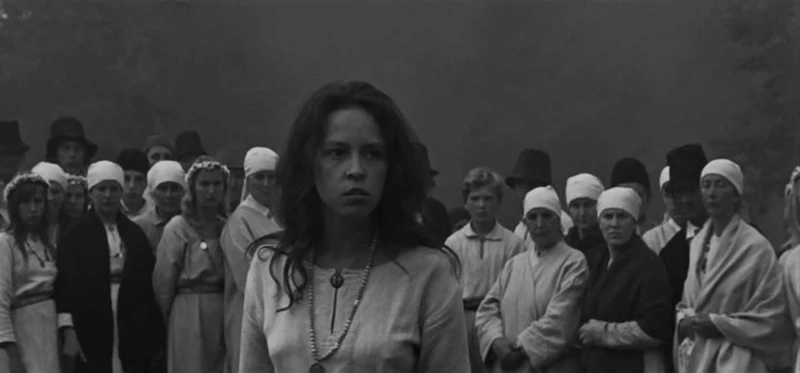
As she runs, she has flashbacks to a scene from her childhood: watching her mother, bound to a pole, being whipped endlessly by the townsfolk.
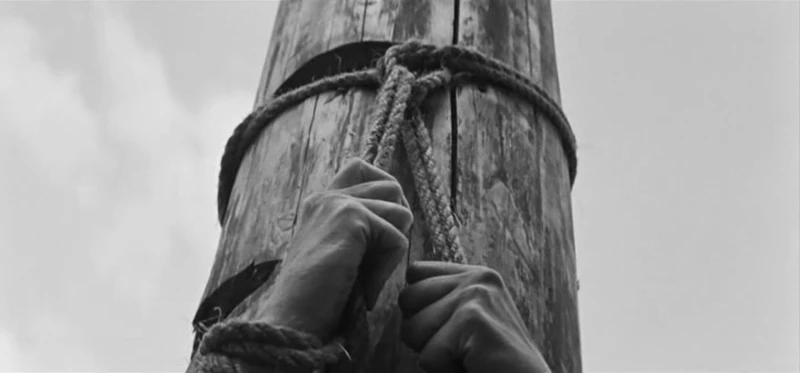
Her boyfriend stumbles after her, yelling her name: "Tiina!" He finds her splashing joyously in a lake, but also has some cool hallucinations while staring at the ripples in the water. The pantomime without speaking again, and then he flashes back to the ripples; it was a hallucination, he never found her at all.
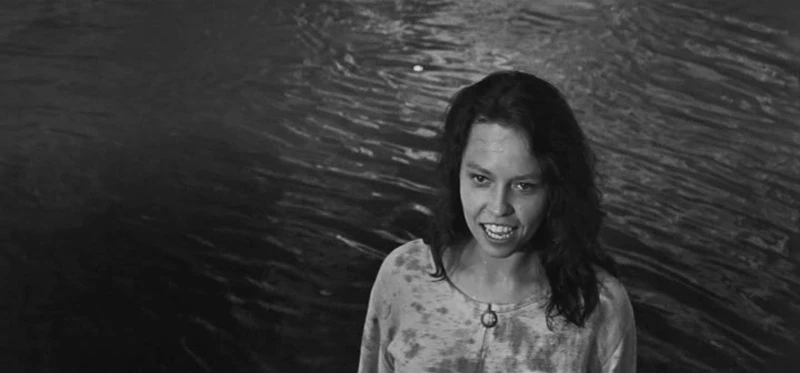
There's another flashback to finding a young girl and asking if she's a libahunt. It's not clear who found the girl or who the girl is. Is this Tiina's origin story? I think so. I think she was adopted by the neighbors after her mother was whipped to death for lycanthropy. Her boyfriend, Margus, walks around in empty fields, poking things with a stick. They've explained just enough to stage it as an invitation to the viewer to think about the sins of the father quandary as we watch these tormented souls stumble unguided through the baltic wilderness.
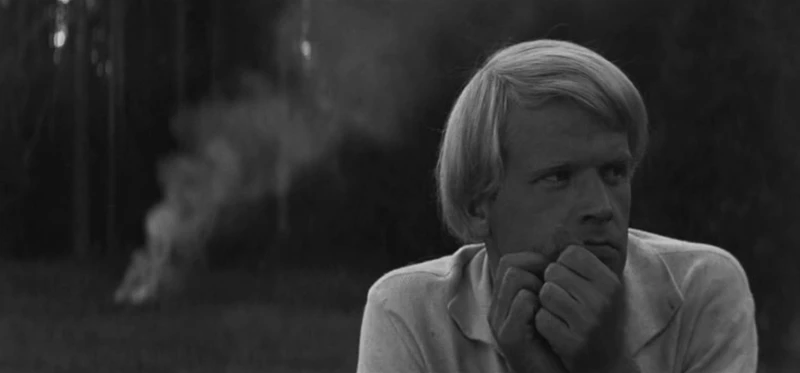
There's a lovely montage of Tiina growing up with her sister and adoptive parents, which is when we finally learn that the girl accusing her of being libahunt and trying to "protect" her boyfriend is her stepsister, Mari, who seems quite infatuated with Margus. She stares wistfully at him through the gärdsgård fences that litter the countryside.

Tiina has an extremely expressive face, so she can pretty much entertain a whole movie just by dancing around in a forest and making facial movements. Good news, since that's a fairly accurate summary of what this movie is. It is intentionally abstract and disjointed, skirting chronological narrative, while still managing to tell a story more efficiently than some films. It's hard to tell what is happening, what has happened, what is hallucinations, and what are desires; all four are definitely present.
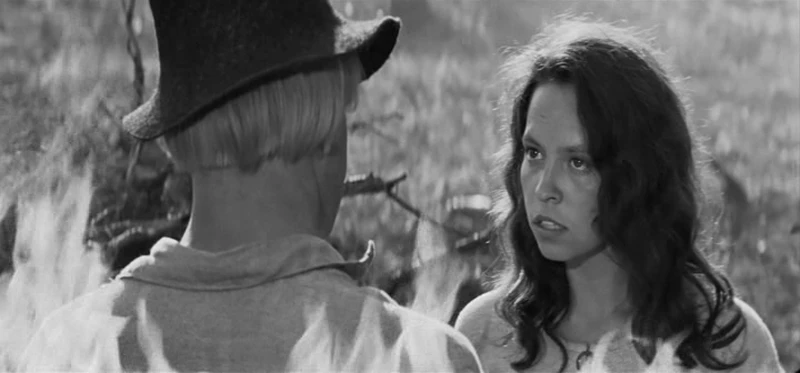
Tiina's face gets frownier and frownier, darker and darker, as the witch and libahunt accusations continue. She dreams of a supportive boyfriend, but he isn't actually with her; he's tormented back at home. Her stepsister flails back and forth between accusing her and protecting her. Her elders, in flashbacks and visions, speak in proverbs and riddles.
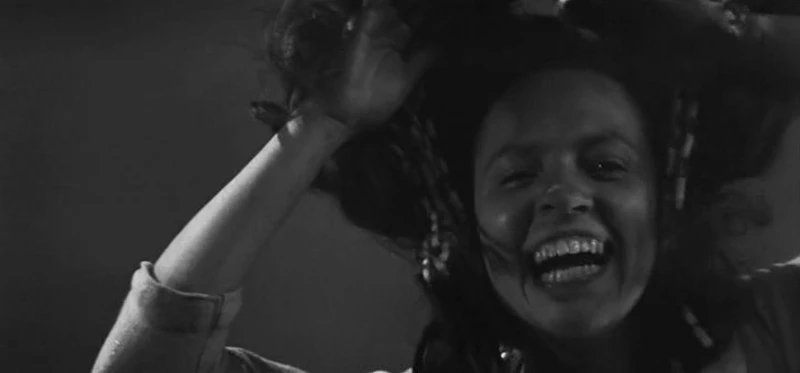
A scene in which the entire village rhythmically scythes a field in unison reminds of the rice paddy musical numbers in Beat Takeshi's brilliant Zatoichi. The sound of scythes becomes the backing track for the next flashback scene, while Margus stares angrily into the endless expanse of wheat.
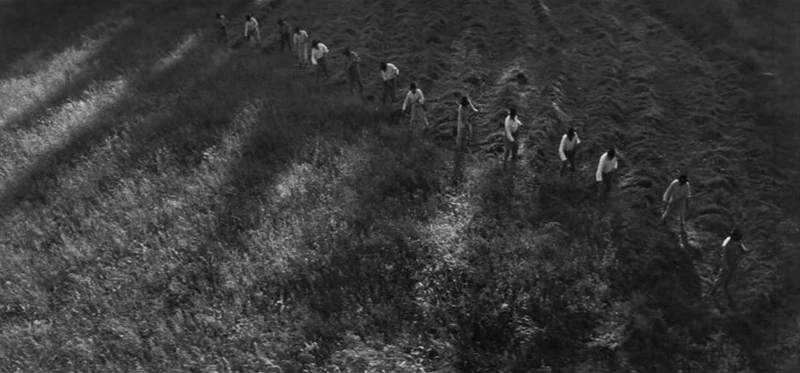
These scenes establish that his family considers Margus soft and gentle, "a skylark", and Tiina a hard and dangerous outsider, "a hawk," further framing her as an unlovable loner. "All of us are born to suffer, one way or another," grandma offers helpfully.
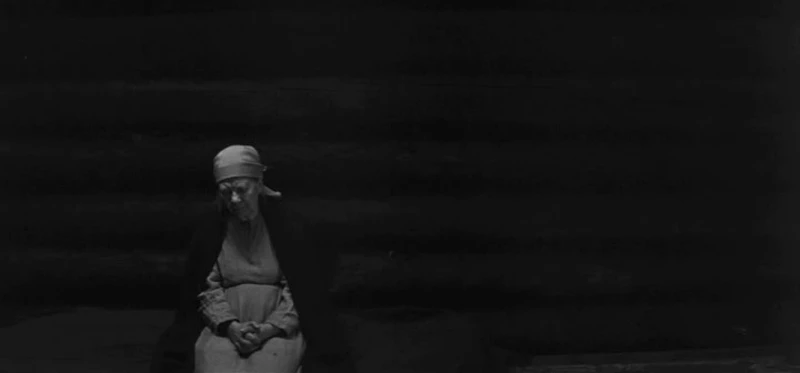
Tiina's voiceover pops in to insult Margus's family, calling them generational slaves, while her family is hunted but free. Margus can hear it – it might be a hallucination – and looks around anxiously. The whole movie might be a metaphor about how the populace allow itself to be governed by unforgivingly exploitative slave-drivers, and ostracize those who rebel; it is from the pre-war Russian Empire, after all, and I don't think it's painting the hard-working farming life in a particularly great light.
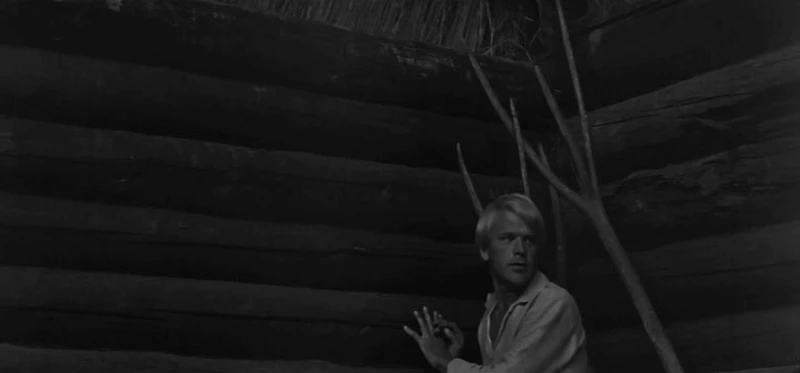
Tiina returns for real, entering the family cabin where they are all gathered. Margus tries to run to her, but his parents snap at him to sit back down. Tiina is not having their bullshit: "bread you have given me, but never have you regarded me as your own." She calls on Margus to leave his family and follow her blindly into the woods. Her facial expressions are beyond those of the greatest actors of our days; she speaks volumes with only the corners of her eyes. The director has time to spare; you can wait in 15 seconds of pure silence for her to turn around. You can and you will.
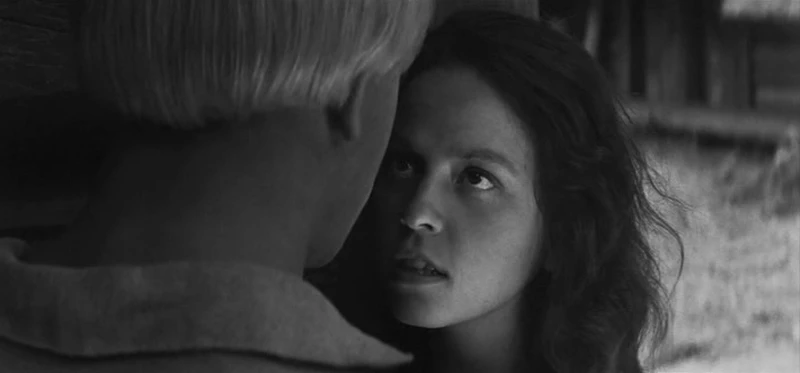
Margus watches her march off, confident and alone, into the wooded pines. Out-of-tune, disharmonic strings vibrate loudly with anger and annoyance. The family stares down at their bowls of soup in visceral silence. This film should have been famous.
